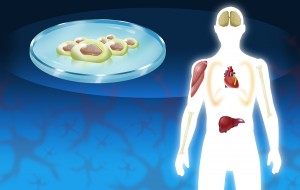Introduction
In the following I am describing “radiation from Fukushima less than expected”. I have blogged about the fallout from the Fukushima disaster in Japan before. At that time scientists predicted the levels of radiation to be high around 2015 on the US West Coast. The water with the radioactive contamination took that long to arrive on the Western shores of North America.
The predictions were based on the known water currents in the Pacific Ocean and the amount of radioactive pollutants released. With that data it scientists extrapolated what would happen in the future. The future is here; we just heard about reports that the polluted water has arrived.
Measurements of sea water for radioactivity
Scientists measured the radioactivity of the nuclear isotope composition in the water directly. This showed that the concentration was much lower than previously assumed. So, you can swim in the ocean of the West Coast of the US and Canada. You can also safely walk on the beaches. The scientists who did the present calculations pointed out the following. Let us assume that you swim in the ocean for 6 hours for 7 days per week continuously. You do that for a period of one year. Your radioactive exposure amounts to 1000 times less than that of a dental X-ray.
Video summing up the outfall from the Fukushima disaster
Here is a video that puts things into perspective (look at the video located on top of the page).I highly recommend watching this. It sums up how the Fukushima disaster affected marine life. But that the West coast of the US and Canada do not seem to be in danger. There are no highly toxic levels of nuclear isotopes of the West coast of North America.
Why should we trust these measurements?
You may ask yourself: why should I trust these measurements? As pointed out in my previous blog, there were a number of radioactive elements released into the atmosphere. They also leaked into the Pacific Ocean. Cesium-137 and Cesium-134 are both part of the Fukushima incident. Scientists measured these isotopes and found them higher than previous concentrations at the coast of British Columbia. Cesium-134 has a much shorter half-life and can therefore only come from Fukushima. But Cesium-137, which has a half-life of 30 years, showed an increase to a higher than previous level because of the Fukushima disaster.
Previous nuclear weapons tests
Underwater nuclear weapons tests in the 1940’s to early 1990 before the Comprehensive Test Ban Treaty was enacted caused the previous baseline of Cesium-137 levels in the ocean. Fortunately, only about 25% to 30% of the original accumulation of radioactivity was present before Fukushima added more Cesium-137. The other nucleotides Iodine-131, Plutonium-238 and 239, Strontium-89 and 90 and Uranium-234 and 238 are also helping scientists to sort out the contribution of radioactive pollution from Fukushima when in comparison to the baseline before.
Why it matters what you eat
It appears that you are completely safe when you hear such good news about radiation from the Fukushima disaster. Not quite so. Any source of radiation, which includes traveling by plane, getting mammograms in women, getting CT scans, lung X-rays, dental X-rays etc. has an effect on your system. It causes an inflammatory response, which worsens with the consumption of sugar and starchy foods. Researchers found that sugar and starchy foods oxidize LDL cholesterol, which in turn causes inflammation in your arteries. The oxidized LDL cholesterol also travels through your whole body including your brain. Even Alzheimer’s disease is an inflammatory brain disease. Overconsumption of sugar and starchy foods can in part cause Alzheimer’s disease.
Radioactive exposure causes a strong inflammatory response
Now add to this radioactivity exposure, which causes a strong inflammatory process in your body from free radicals that circulate in your blood. As a result the problem with the background radiation being a bit higher than what it was before is also the oxidative stress from sugar and starchy foods causing more inflammation within the body. We need to remember that the victims of Nagasaki, Japan were the ones that did not follow the dietary advise of Dr. Akizuki. He had ordered a strict vegetarian diet, which consisted of uncontaminated brown rice, fermented foods, sea algae and vegetables. Dr. Akizuki did not allow sweets of any kind, but some salt as the main condiment. Everybody was fed at least one helping of a soup with fermented soy and seaweed in it (wakame miso soup).
Dr. Akizuki’s regimen allowed people to survive after the atom bomb
It was this regimen that helped tone down inflammation in the body. It countered the negative effects of the radiation of the atom bomb.
Other causes of radiation
We are exposed to the leftover of 25% of the nuclear experiments from the nuclear bomb testing (the Leftover radioactive Cesium-137 mentioned above). In addition background radiation from sunbursts and cosmic radiation have to be absorbed by our system. As the radiation fuels inflammation, we cannot afford to continue to indulge in sugar and starchy foods that lead to hyperinsulinism, inflammation and oxidation of LDL cholesterol. If we cast all caution to the wind, we will get degenerative diseases like arthritis, inflammation of the lining of the arteries leading to high blood pressure, heart attacks and strokes. Obesity and diabetes will also undermine our health. All of this leads to disabilities and premature deaths.
Conclusion
I am glad that the Fukushima news are a lot better than anticipated for the West Coast of the US and Canada. However, we should not forget that, like the burden of radiation, certain foods (sugar, high fructose corn syrup and starch) also cause inflammation in our system. We need to remember how effective Dr. Akizuki’s diet was back in 1945 protecting those who were in immediate proximity to the atom bomb in Japan.
Today we should consume a Mediterranean diet, which is also full of antioxidants and is thought of to be anti-inflammatory.
Supplements that protect you from radioactive contamination
We can also take antioxidant vitamins like vitamin C, glutathione, fish oil and others that will protect us from anything that oxidizes LDL cholesterol or produces free radicals. Common sense needs to prevail. Radiation is a burden that fuels inflammation in our bodies, but dietary measures can greatly contribute to keeping us out of trouble. Vitamin supplements in general help with their anti-oxidant effects to protect your vital organs (heart, kidneys, brain, lungs, liver, bone marrow). I have discussed this in detail under this link. Note that I am recommending Io-Plex SR, which is an iodine supplement to be taken twice per day to protect you from fluoride, bromide and chlorine pollution. It will also protect the iodine receptors in your body from traces of radioactive salts in fish, sea water and the environment.















